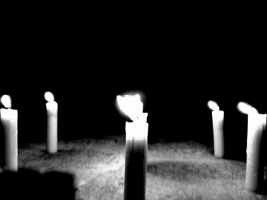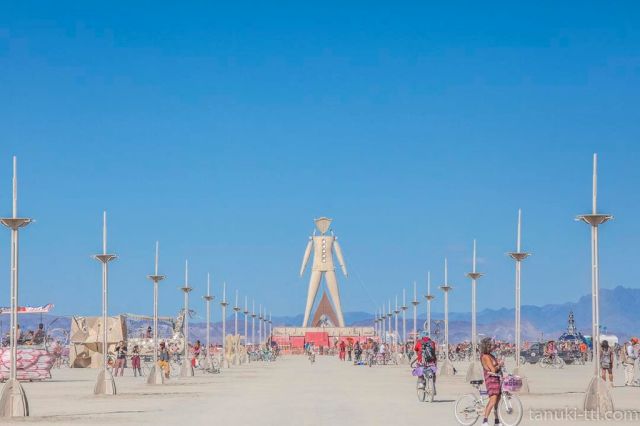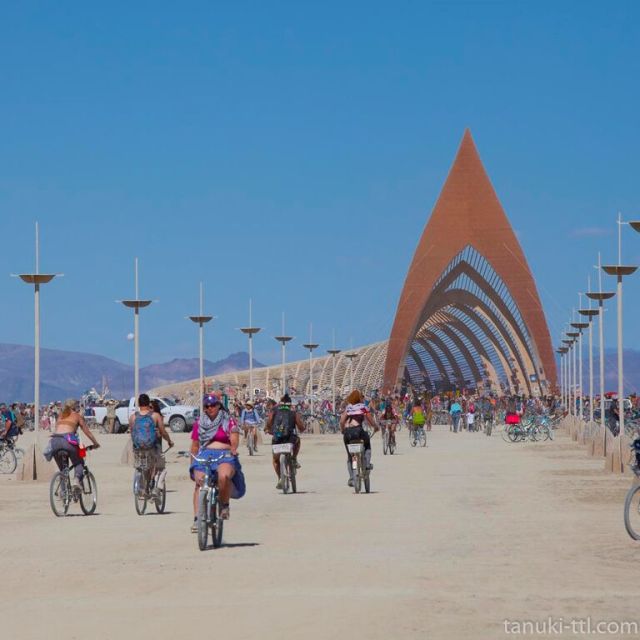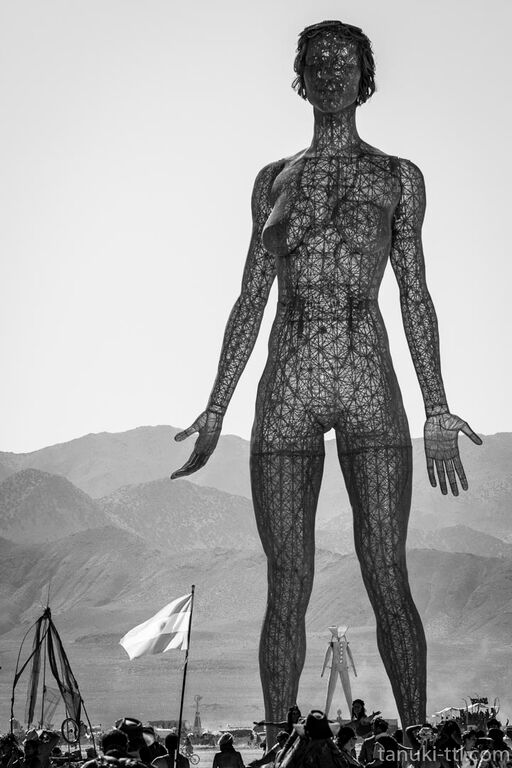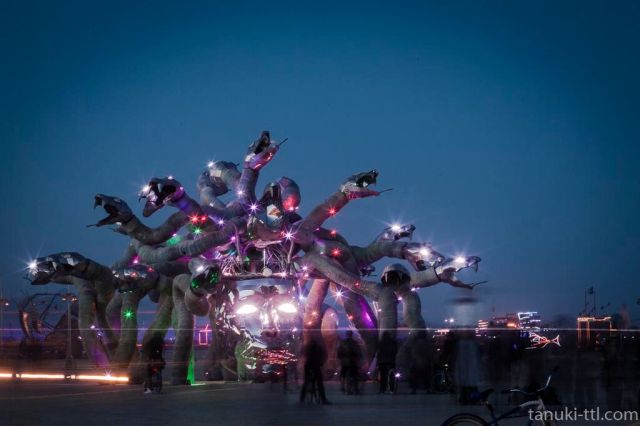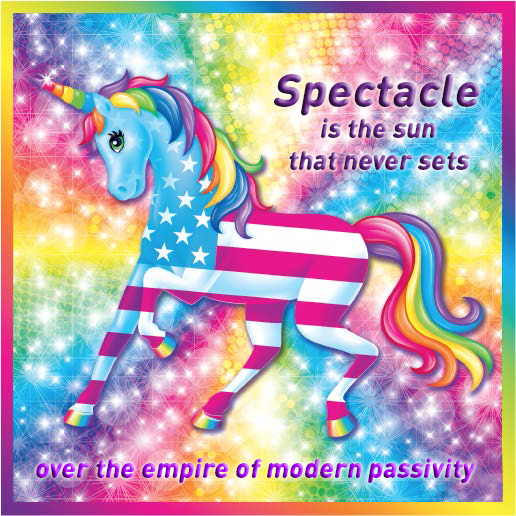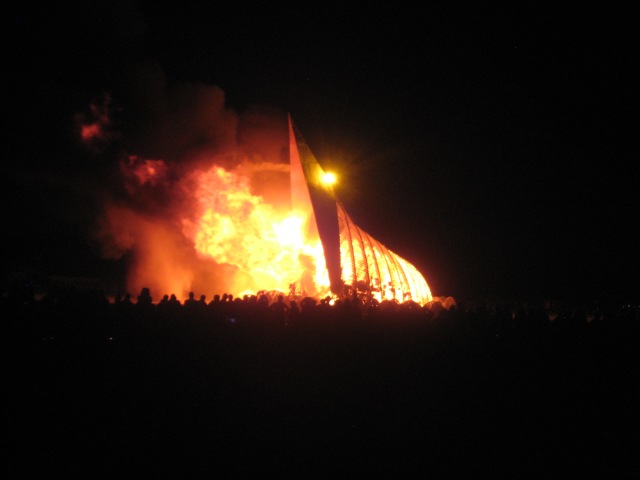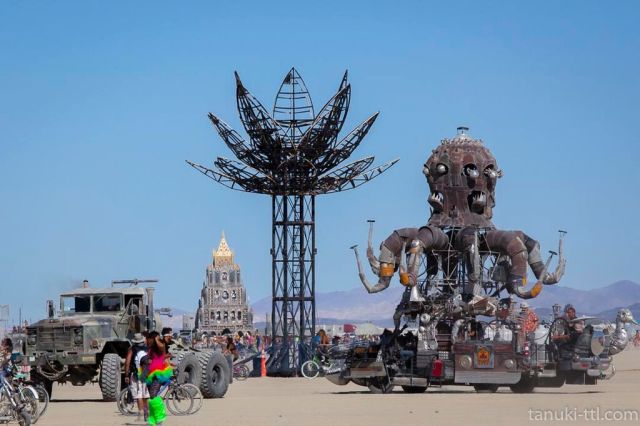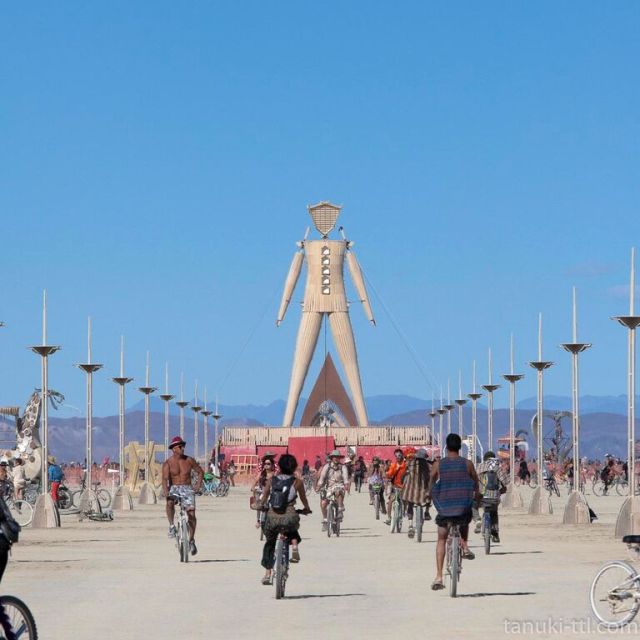 Meg’s note: This post was written by my husband, John Elison, who has no blog of his own. He likes to tell long stories, and I like to hear them. Hope you do, too.
Meg’s note: This post was written by my husband, John Elison, who has no blog of his own. He likes to tell long stories, and I like to hear them. Hope you do, too.
The Man first burned in ‘86 and the Ten Principles weren’t made official until 2004, and yet much of the Burning Man’s heart seems to lie somewhere in those ten guiding lines. So, as I attempt to process just what happened during my first burn, I am going to use them to compartmentalize my experience. It was that or let this become a novel of some cis white dude’s self-discovery at Burning Man. Nobody wants that.
Radical Inclusion
Anyone may be a part of Burning Man. We welcome and respect the stranger. No prerequisites exist for participation in our community. And yet, while the invitation is there, I don’t think everyone got it. Certainly, there were more than your standard number of tattooed weirdos, nudist octogenarians, and peacock-blue fauxhawks.
If your standard is nowhere near a coastal city.
There were so many gorgeous naked 20-somethings that the first couple days I was torn between states of Stendhal syndrome and paranoia. I was convinced that the BRC police, baffled by how I even got in, were going to find me and kick me out for not meeting their strictly-enforced beauty quotient. My only saving grace was that I am white (which is kind of redundant, I know.) Everyone here is white. Everyone.
Not really. But every year BRC keeps a census and according to their latest record I meet every majority demographic from race, age, gender, and education. While this gave me some comfort that I would not in fact be kicked out, it did a lot to kill the radical inclusion illusion. While talking to one of the few POC I found, it was explained to me that one of the biggest issues facing Burning Man’s quest for greater diversity is that since time-immemorial POC have tried to avoid places where white dudes are riding in the backs of trucks screaming “Wahoo!”
Even in my attempt to find online POC Burner’s suggestions for more inclusivity, I found that the topic is mostly being discussed by only more whites.
(an interesting piece on the topic of security is also addressed in this piece.)
Being of that ivory camp, I don’t have an answer other than to continue to invite those whose voices are often neglected to speak up. Even if we lack the radical inclusion we profess to seek, it doesn’t mean that we don’t want to find it.
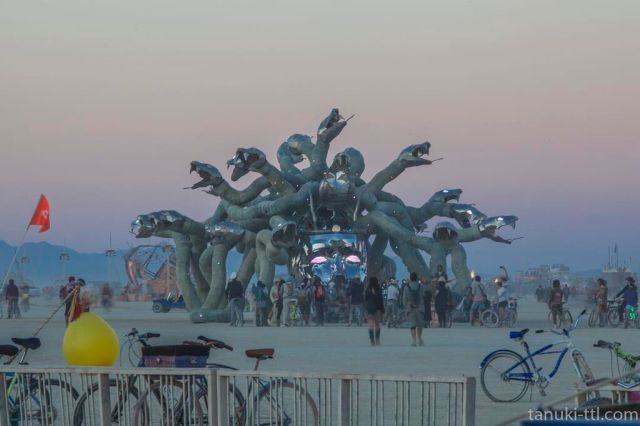
Gifting
At the beginning of August I announced that I would be giving free massages to my friends and family. In part, this was just my way of giving back on the road to my 35th birthday. It was also so that I could knock the rust of my skills, a bit. I knew that I would be gifting some of my time to my crewmates as their masseuse and I really wanted to do a good job.
I got a few wonderful friends to lay on the table for me and I practiced my effleurage, petrissage, and tapotement; as well as my timing, and grounding, and draping. Then, when the time came, I hauled my table and chair and coconut oil off to the desert. I even brought a tub and extra vinegar for foot washings (a practice my dad started doing when he worked at Renaissance Faires.)
It’s been theorized that in gift economies that the bigger the gift given, the more prestige and power the giver gets in return, and I had every intention of being the big mystic imperial poobah.
I think this was one of the reasons our first day there was so difficult. There was no way for me to give that gift. There just wasn’ the space, time, or environment for it. I had tied my self worth to my gift, which made the gift for me more than anyone else. And that, people, spoils the gift.
In time, we were given a wonderfully sagging Easy-Up, that hung downward over our heads like an enormous canvas breast. Tired of feeling it brush the top of our heads, we wounds the center tight and wrapped the excess in duct tape, putting a huge silver nipple on the newly-lifted breast. Being the incredibly talented, witty people that we are, Meg and I named it Nipple Tent.
Slowly, as we made connections with the rest of our crew, people started coming to us. I worked on bodies with rods in their backs, with scars from botched surgeries, heavily pierced bodies, protected bodies, PTSD bodies, and bodies that had just worked 18 hour days for a week to build an Escher-esque suspension bridge that was just going to burn a couple of days later. I worked on my wife, on strangers, on new friends, and old friends who were once enemies and everyone was so incredibly, painfully beautiful. This trust was their gift to me. Every time someone laid on my table or sat in my chair or in any way let me offer a healing touch to them, I received this gift of trust and it was crystal clear that I was never going to be a mystical poobah anything. I can’t even profess to have helped everyone I worked on, but I know that work always helped me. The connection built in those tender moments of intentional love healed things in me and I am supremely grateful. Thank you.
Decommodification
It’s true that Burning Man is its own brand. One we pay dearly for, both directly and indirectly. The irony of this is not (I hope) lost on any of my fellow burners. However, it is also true that once we set camp, I stopped seeing brands, phones were put away, and the constant rush of being sold something was put to rest. My eyes began to relax. By the 3rd day, even my Male Gaze was reduced to the much more controllable Male Glance. Admittedly, this may have been from overstimulation, but I was nonetheless relaxed.
So did the need to sell something. Once I got over the “my job/gift is my identity” trial of the first 48 hrs, I also stopped telling people what I do for a living. Once I went a couple of days without bathing, I stopped worrying about what I looked like. Once I started handing out raw and real for free to strangers I was able to forget that the commodity once known as “John” was ever for sale.
And it wasn’t just me. Meg read from her book on the spoken word stage, but didn’t bother to hand out copies, because it smacked of self-promotion. I watched singers finish sets only to hand out CDs of other people’s music. And I watched a baby boomer named SHRED improvise metal sets with lyrics like “She’s not Mexican, she’s a Hawaiian,” with no sense of irony whatsoever.
We can all stand to decommodify, once in awhile.
Because we’re worth it.

Radical Self-reliance
For the most part, I felt neither radical nor self-reliant during my stay in BRC. How could I? My wife and roommate/sister-wife/younger brother managed most of the packing, sewing, and driving. Once there, all of these amazing, brilliant, strangers went out of their way to make sure I was fed and hydrated, that I was getting enough sleep, that I knew how to do my job and covered my ass when I didn’t. Even those outside my camp made sure that I wasn’t overheated or dirty. There were volunteers putting rolls of toilet paper in all the portapotties every day in what felt like it was just for me. A wonderful camp of sweet, gentlemanly bears even offered a space where I could lay back, get a shoulder rub while being fanned and misted, sipping on a wonderful mango mojito and then they cleaned, clipped, and cared for my beard. Why? Because clay encrusted pube face doesn’t look good on anybody.
But maybe self-reliance isn’t only about things? I mean, really, what if nothing is only about things, but especially this?
Our first day in BRC was my birthday. We were met by an eight hour dust storm. My asthma, which has only come out to play about once every 7 years since junior high, gave me a strong, hearty hello. Our tent and bedding were immediately hidden under alkaline dunes. My eyes ached. And the dust in my beard aged me about 20 years but somehow made everyone else look like the Greeks carved punk paragons and brought them to life in Reno.
I had hoped too long for this. I was given too many opportunities not afforded others to be here. I was miserable and I felt guilty/ashamed/bad for feeling that way. Finally, I pulled Meg into the car to get out of the white-out and I asked her “Can we just accept that this sucks?” And being the bad ass that my wife is, Meg didn’t guilt me: “Look here, dude, (I hate it when she calls me dude) you know how hard we worked to get here?” or let me wallow in it: “Oh, puddy-wumpkins, why does this always happen to usss?” Or try solving it for me: “Let me just take care of that storm for you, babe. Oh and here’s a G&T and a handjob, too.” She thoughtfully acknowledged that my feelings were real and valid and then sat with me while I processed that. She smiled and nodded. And that’s all I needed to turn things around. Because that’s life. Or at least that has been my life and I suspect the lives of many of my friends. When we ignore the obvious suckiness in the world I believe we can’t properly deal with it, either. Like hoping to shoot invisible snipe with a gun you don’t believe you have, loaded with imaginary buckshot.
Owning your negative feelings is self-reliance.
Not giving in to negative feelings is self-reliance.
Not allowing other’s negative feelings to take you down is self-reliance.
And when we are all being self-reliant it is so much easier to also build community, to make art, to give more to our neighbor, to make that extra bit of magic in the desert happen. And that’s what makes it radical.
Radical Self-expression
There were art cars and murals and mutant monkey babies. There were fire dancers, a 20 ft. skeleton marionette, and a burning temple. There was a blue sabretooth leopard that played the Hang drum and a Discordian wizard who slung hard truths and nonsense through wicked rhymes and rhythms (Zak and What Army?) and the winner of the Battle of the Marching Bands had a stilt-walking witch who dual-wielded 6’ bullwhips like they were just another member of the percussion family.
And yet none of that seemed “radical” per se. Delightful, wondrous, awe-inspiring, and surreal? Definitely. But nothing so radical as sitting silent in a tent across from a nymphet with vitiligo and eyes in Heisenberg Blue. This was a tantric exploration of Divine Intimacy at 6:30 and Ersatz. The closest I got physically to anyone was a long hug, however, we sat and sprawled in a dirty tent, enacting a cosmic dance where we ran across the infinite spectrum of radical human expression, silently breathing, staring into one another eyes, honest, naked, and open.
Once the silence was broken, this long-limbed youth and I spoke in turns about heartache and loss and self-sabotage and all of the incredible, godlike potential we have stored in us and how only fear seems to cork that in. Fear of rejection, of failure, of responsibility, and all the million other shades of fear, which are just that; shades. Nothing real or substantial, here. I am prone to both laughter and tears and with this nameless elf, I did both.
I truly believe that every man and woman a star. As a star, I emit light and have my own gravitational pull. Better still: as you are all stars, I receive your light and occasionally get pulled in by your personal gravity.
I should note that there was one performance that took place on Center Stage that I think transcended into that similarly vulnerable, truly radical space. During Sorne’s performance of Fragile Frame, Laura Blake’s dancing ushered me into a liminal space and taught me something, however, when I try to talk about that particular moment my words run dry. I was raised to believe that certain things are sacred. That talking about them too directly cheapens them. Perhaps this is one of those moments.
Communal Effort
From the lamplighters to the TP patrol to everything the Black Rock City Department of Public Works does to the art to the music to the fluffers, Burning Man is a community and I was really glad to be a part of it this year. I was especially fortunate to have been a part of the Cafe Sound community. We were all working hard and playing hard and I have heard more bitterness from coworkers in quiet, air conditioned libraries made to work an extra 10 minutes on a desk than I ever heard from one of my crew who had to work a double shift while their relief slept off whatever happened the night before. My Cafe Sound teammates were all amazing.
An especially memorable night was my first day as Lead Stage Manager. One of my duties was to make sure we didn’t have dead air. If an act no shows, we find someone in the audience who might have their guitar, drum, theremin on hand and throw them on stage. While this definitely makes room for plenty of playa magic, the reality is that often it’s a hassle. My shift started at 7am. I showed up at 4: 30am just to get a feel for the madness. For all the tantric yoga sun worshipping that goes on in BRC, not many burners actually like waking up at dawn. And it looked like we were about to have a long line of no shows. And none of my almost sleeping hippies in the audience had even a kazoo to share amongst the lot of them. Then came Simply B. This long-haired, walking smile from Salt Lake City, UT showed up with a bass, guitar, a harmonica, and his looper and proceeded to play for almost 3 hours. Then when he had played everything he had (covers aren’t allowed in Center Camp), some of it twice, he personally went out and found people in the audience to play his instruments in order to cover the next hour of no shows, while he sipped coffee and rocked out to his fellow burner’s jams. Simply B was my Community Spirit. Seriously, I love you, man.
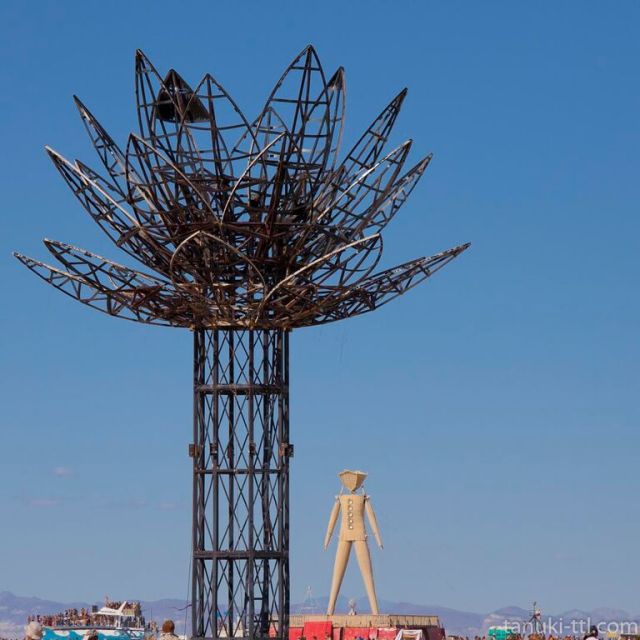
Civic Responsibility
Knowing what I know about the history of Burning Man, what happens now at Burning Man, and the general politics of East Bay Burners at large, I almost feel like this principle was written in either at governmental, metaphoric gunpoint or beneath an alkaline veneer of cynicism and irony. But then my darktard butt went and ran into an anarchist with dreads and a non la and rather than give me grief for my clumsy, virgin ways he threw me a light and wished me luck and safety. I and all of my would-have-been victims thank you, Mr. Lightgiver Man.
Leaving No Trace
Picking up MOOP (matter out of place) was sort of a nostalgic zen thing for me.
Before I left for Burning Man, I talked to my Dad who took great liberties at teasing me about how me and my siblings still complain about that one time he hauled us out for desert camping. We were hot and miserable. There were so many bugs that the ones that covered our tents made the lighting inside look like dusk at noon, and the ones in the pool left a layer thick enough you could walk on it. “Hey Dad, I’m like Peter. I can almost walk on water, too.” And now here I was going out of my way to go to a hot, miserable desert full of bugs.
But actually, I loved our family desert camping trip because my dad taught me then that the only thing worth bringing back from a vacation is a better story. He taught me to always leave no trace. It’s not just the crazy hippies in the playa who understand that this is important. But it was really nice to see that most of the crazy hippies in the playa did get it.
Participation
Everywhere I went there were Easter eggs of delight. No corner came without some sort of spritz or drink or smile. And food and drink were abundant where I was told that hydration and nutrition were scarce and treasured necessities (and they are, burners. Stay hydrated. Eat things.) And towards the middle of the week when the party really got started it seemed as though I was almost being chased down to be given things. At one point, I literally had a remote control guacamole truck drive me down and follow me until I took some of its chips and dip. But why?
The best I can come up with is the 100 hand massage.
During my wanderings, I ended up in a tent with some Angelenos and a strange bed space. I had ducked in to avoid a quick gush of dust and they asked me if I was there for the 100 hand massage.
“Well, I am now.”
And with that someone stripped and got on the table while the rest of us massaged their body all at once. We took turns. The more times we worked on someone, the more people saw what we were up to and joined us. We got more in sync and our technique together improved. My own time laid on the bed was incredible. And fun. And I think most of us get this. We want to share. We know sharing is fun. That the more we share the higher the chance that someone, or several someones, will want to share with us. Maybe I get to be the great mystical poobah, after all.
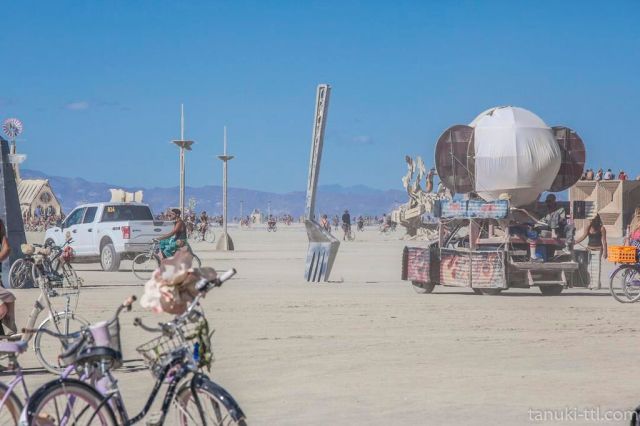
Immediacy
Linear time is a lie. Time is both infinite and eternal. Therefore, it is one giant single point and plane. What we are experiencing is just that facet of time that we have chosen to focus on, right now.
One night, I got to see a steampunk octopus car with moving, flame thrower tentacles light up the sky, in direct competition with my wife’s cherub-cheeked grin. Then she hit me. With a snowball. In the DESERT. Dumbfounded, I watched her giggle and run away. She looked 10 years younger. And not in spite of the crusty grey dreads that had developed in her molasses curls, but because of it. No, she was 10 years younger. Because time isn’t linear. And that slip might demonstrate the most challenging part of this principle. Time is a slippery point on a greasy, tilting plane. We want it to be linear and clean and behave the way we expect. For all of our bemoaning of the number of hours in the day and how aging sucks us dry, we tend to like our memories of the past and plans for the future much more than their actual present-time manifestations. Immediacy is intense. But it’s also all we really have. Even off the playa.
Before I conclude, let me just say I tried really hard to not be trite, but then Meg told me that it was ok because that’s how all Burning Man posts end and who am I to argue with an award winning author?
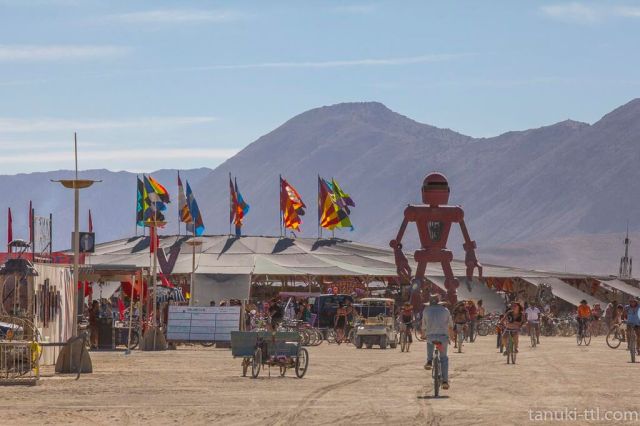
Conclusion
“What do you want most out of Burning Man?” Meg asked me as we started up the car, our new car, the first new car I have ever owned, the new car I had bought just a week before, the brand spanking new car I had just bought and was about to drive to the desert.
“A story.”
I don’t recommend driving new cars into Black Rock City if you want to keep them looking new. But I do recommend taking anything that’ll get you there, if what you are looking for is a story. And these days, a better story is all I’m ever really looking for. The desert is a pretty good place to find one. Or ten.
-John Elison
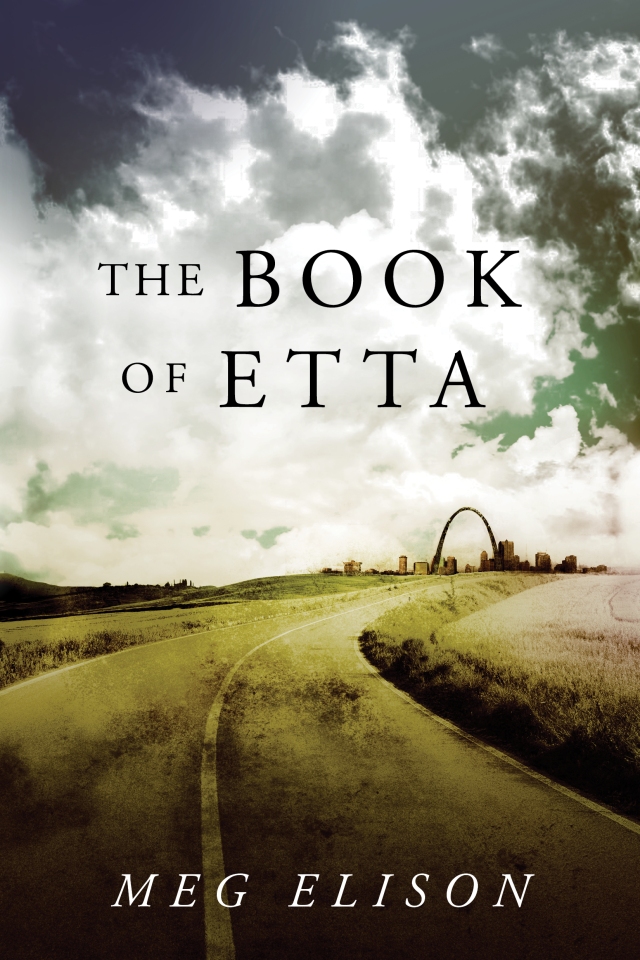
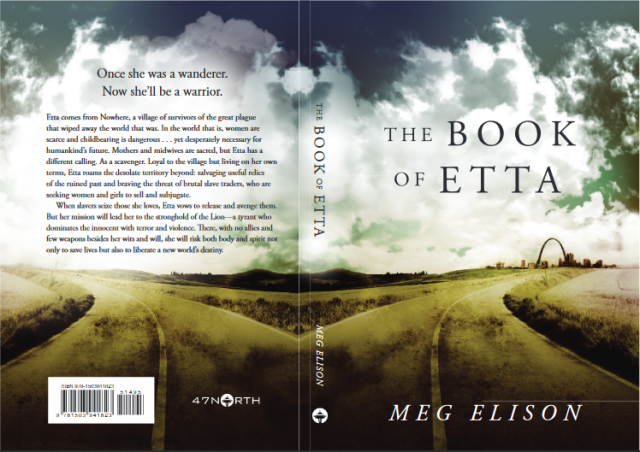

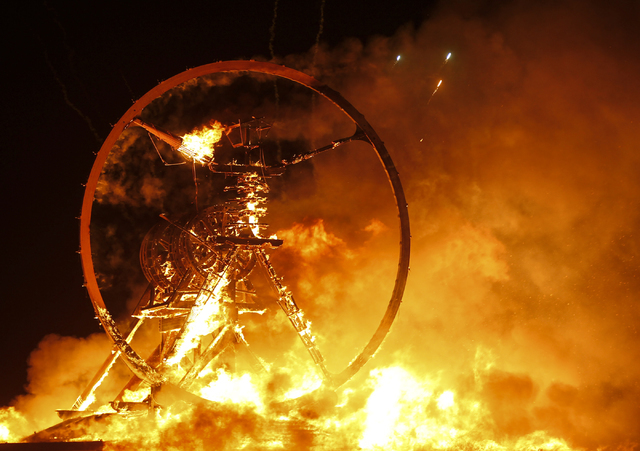
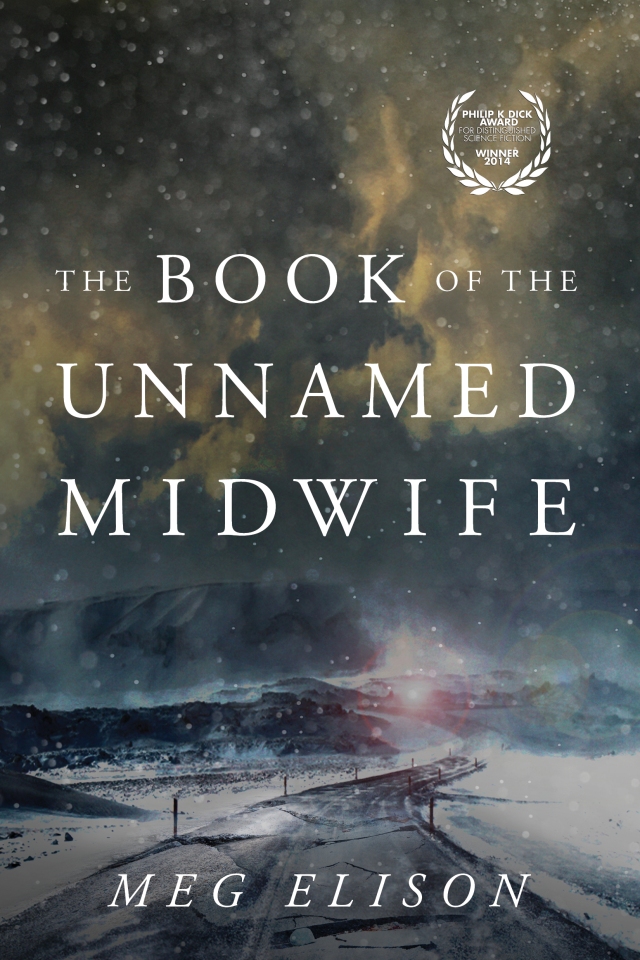


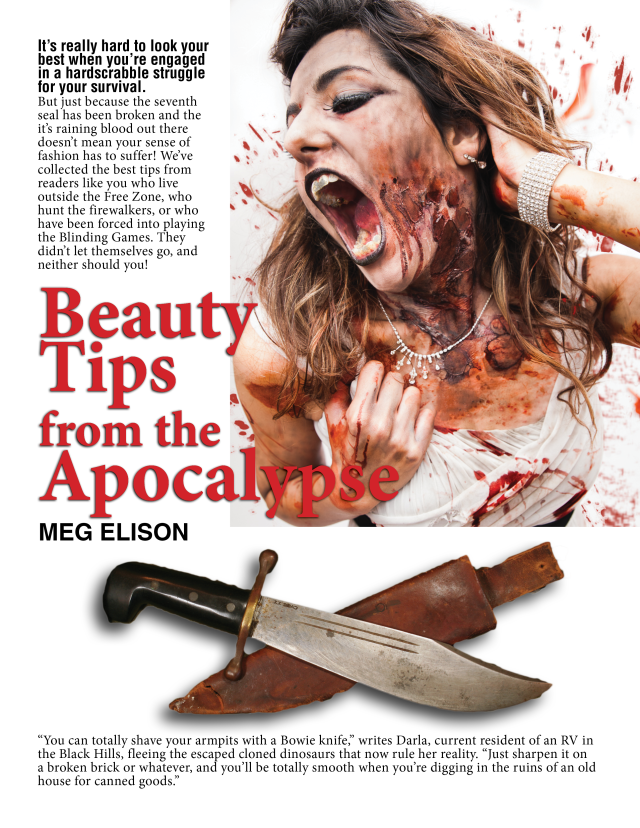

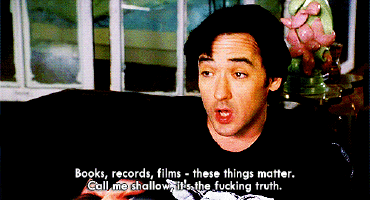 So this is not really a book review. This is that scene in
So this is not really a book review. This is that scene in 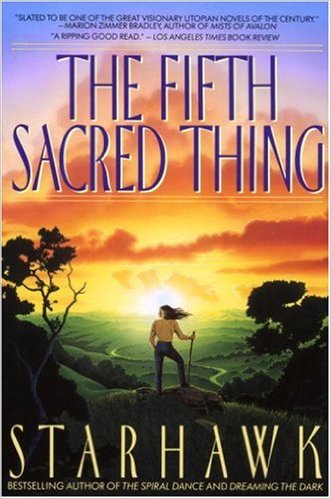
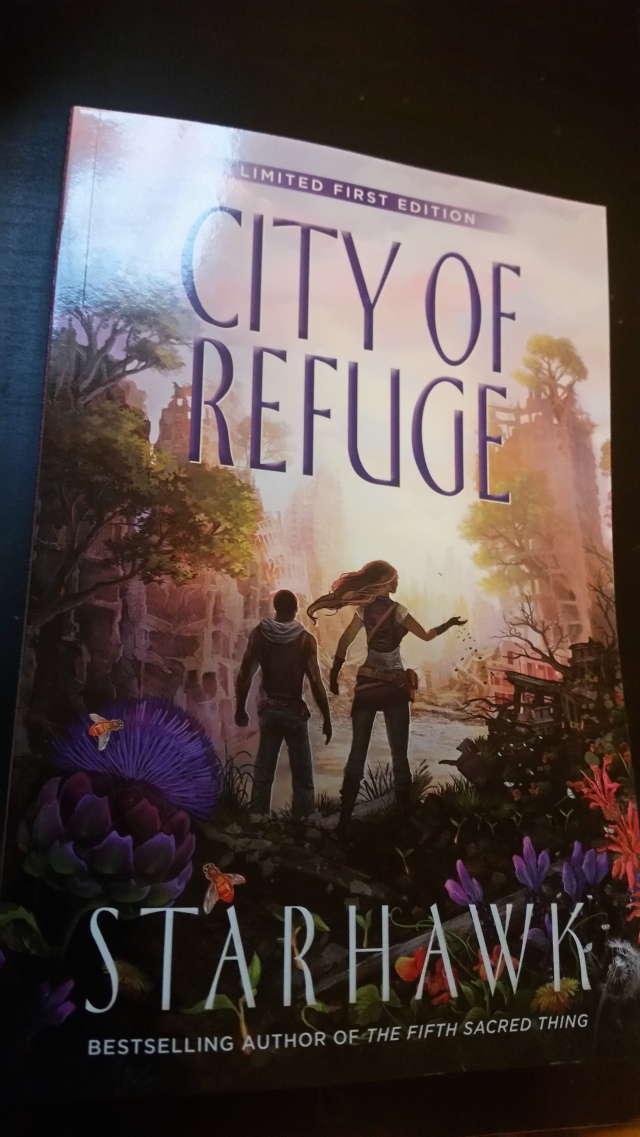 There’s less magic in “City of Refuge” than either of its predecessors. It lacks any of the hardcore witchcraft of “Fifth,” skipping over any of the much-hyped sacred group sex or miraculous dream-working by Madrone. Our heroine visits the bees and the Melissa again, only to be told ‘lol idk’ when she asks what she should do with her ever-growing power. Bird sings songs of revolution, but they’re only understood by decayed academics and they don’t turn the tide. The movement Bird and Madrone start attracts nuts and trolls, and without the convenience of the Wild Boar People to stash the undesirables, the second act of the book reads like a long internet comments section.
There’s less magic in “City of Refuge” than either of its predecessors. It lacks any of the hardcore witchcraft of “Fifth,” skipping over any of the much-hyped sacred group sex or miraculous dream-working by Madrone. Our heroine visits the bees and the Melissa again, only to be told ‘lol idk’ when she asks what she should do with her ever-growing power. Bird sings songs of revolution, but they’re only understood by decayed academics and they don’t turn the tide. The movement Bird and Madrone start attracts nuts and trolls, and without the convenience of the Wild Boar People to stash the undesirables, the second act of the book reads like a long internet comments section. 